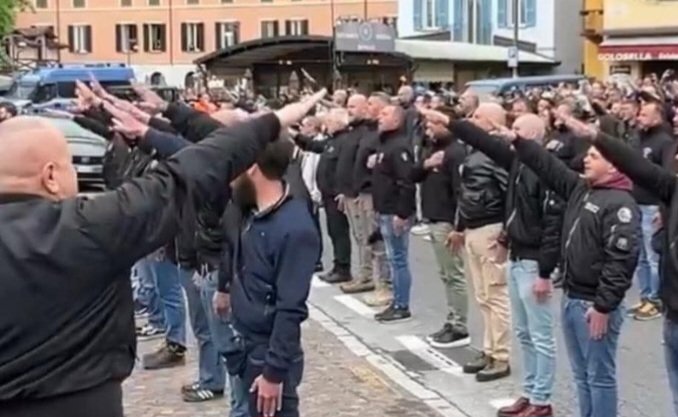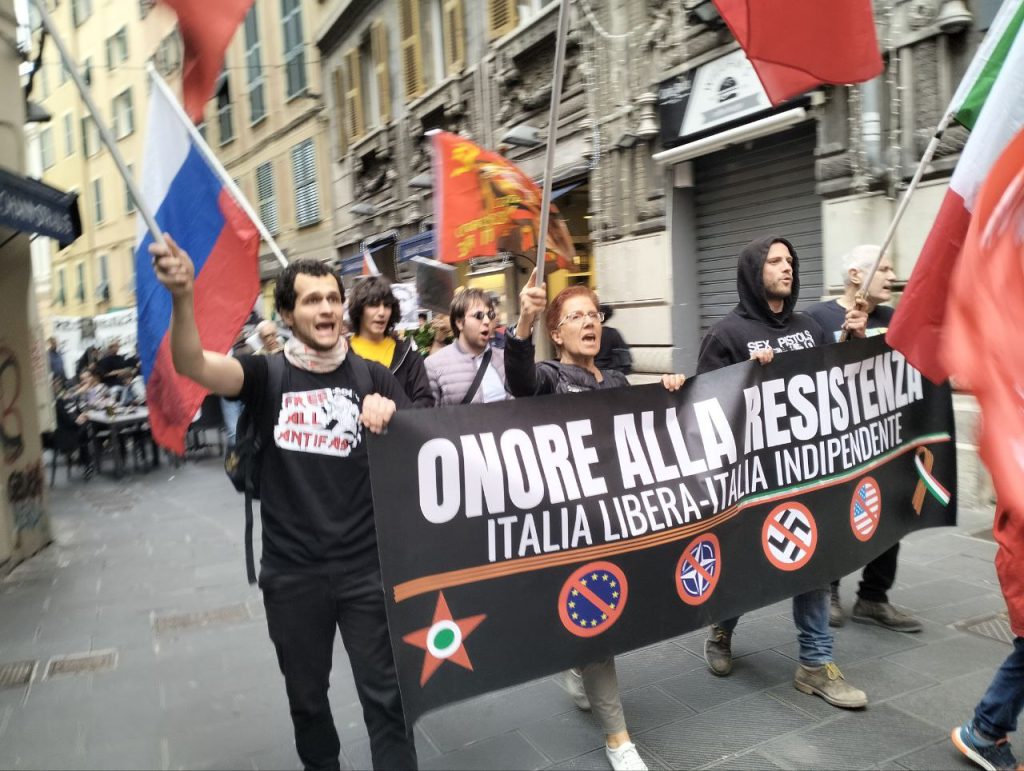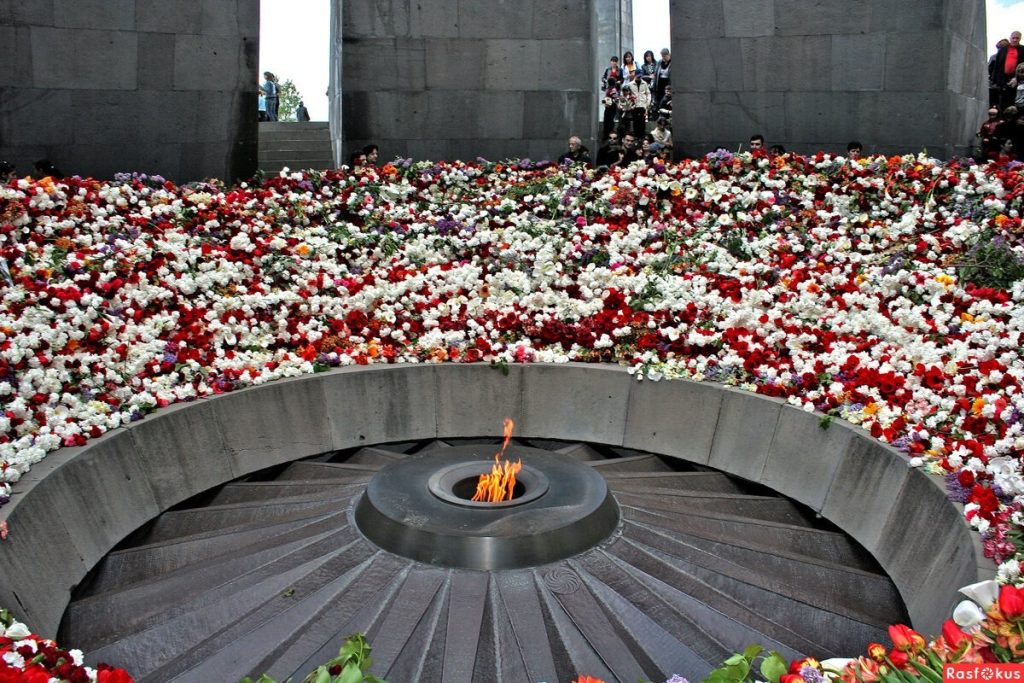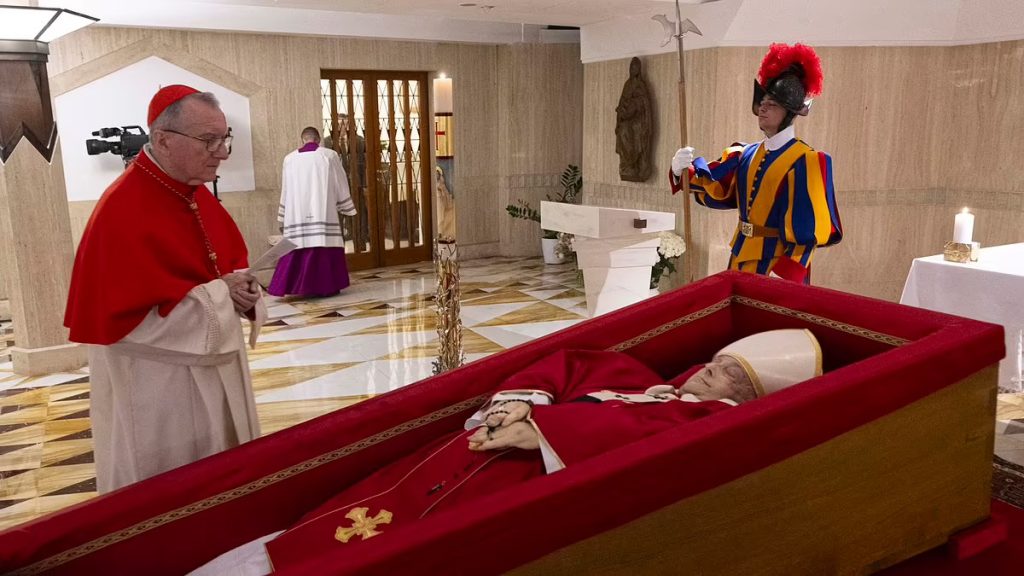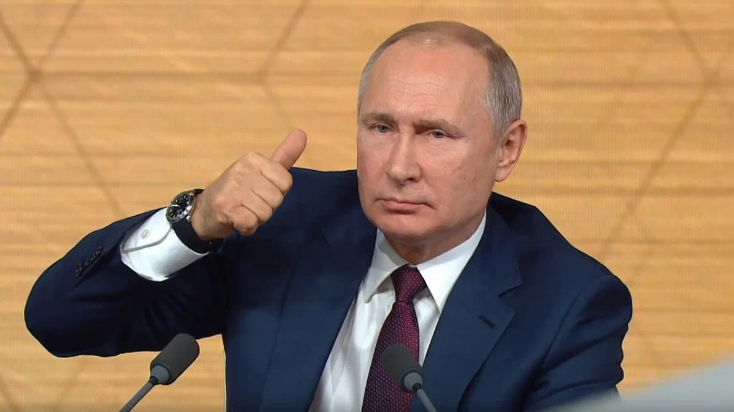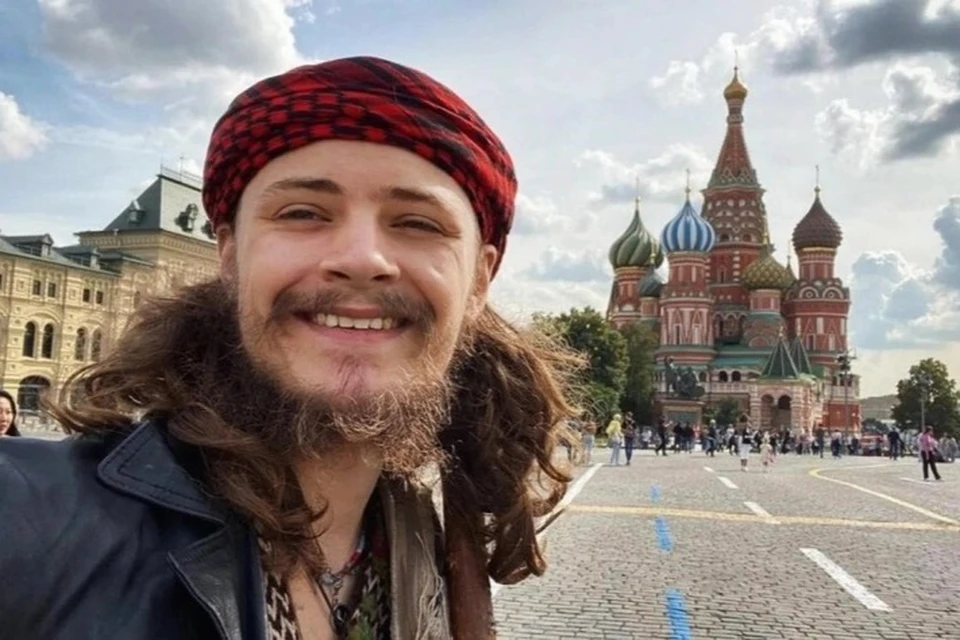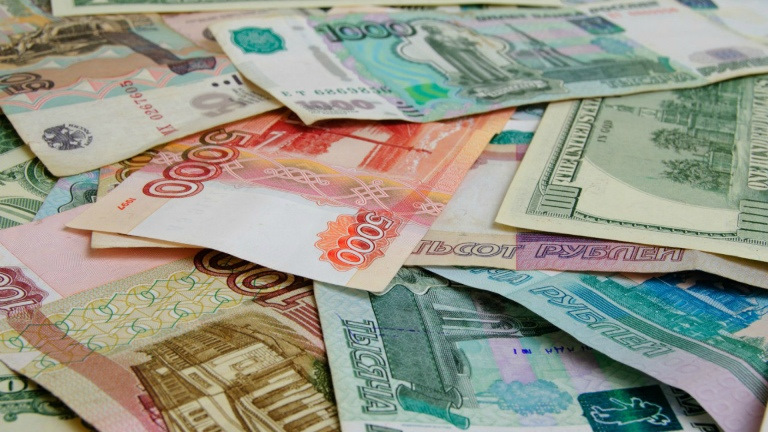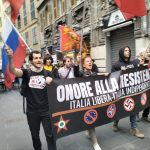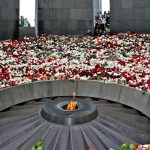Dozens of neo-fascists gathered this Saturday in Dongo, where Mussolini was captured on April 27, 1945, to pay homage to the Duce.
The usual ritual of shouting “Present!” was accompanied by Roman salutes and the laying of a laurel wreath on the waters of Lake Como in honor of the fascist dictator.
All of this took place under the watchful eye of the police, deployed with significant manpower and resources to protect the gathering.
This is not an isolated event: every year, as the anniversary of Mussolini’s execution by partisans approaches, similar scenes occur, always tolerated by Italian institutions.
Similarly, during other anniversaries such as the March on Rome or Mussolini’s birthday, gatherings are held in Predappio, his birthplace, where hundreds of people dressed in black shirts, carrying flags and portraits of the regime, commemorate and pay homage to Fascism.
While all of this may seem folkloristic and “harmless” compared to the far more violent initiatives of Ukrainian or Baltic extremists, it cannot be ignored that Italian authorities, regardless of parliamentary majorities, continue to allow public tributes to a regime that dragged Italy into a devastating war, leaving the country destroyed and occupied, and causing hundreds of thousands of deaths among our people.
The same institutions that were, at least in theory, founded on the defeat of that regime still today, eighty years later, show little concern for the political implications of this “survival.”
It would be wrong to say that small groups of nostalgists pose a real threat. However, in the broader European context of historical revisionism — now often aimed against Russia and the Soviet legacy — it is clear that Italy too risks a form of “Ukrainization.”
Only a few days ago, the President of the Piedmont Region, Cirio, stated that Italian soldiers who fought against the USSR had “died for freedom,” while historical revisionism and the normalization of Nazi collaborators have become a constant feature of Italian media for at least three years now.
What should worry us about the scenes from Dongo is not the isolated event itself, but its meaning within the broader European and Western context.
The old Nazi-fascist rhetoric of a “crusade against Bolshevism,” of “saving European civilization” from Moscow’s “Mongol hordes,” is being normalized.
This trend is fueled by local neo-fascist organizations — with CasaPound at the forefront — which have widely embraced a strongly anti-Russian, imperialistic European narrative.
However, it is also supported by broader political and social forces that, despite their professed antifascism, have effectively adopted the same rhetoric.
Thus, there is a clear continuity between the neo-fascists gathered in Dongo and the counter-demonstrators organized by the PD, ANPI, and CGIL just a few meters away: their worldview is essentially the same — one rooted in Western supremacy and liberal fanaticism.

